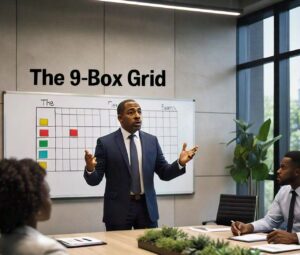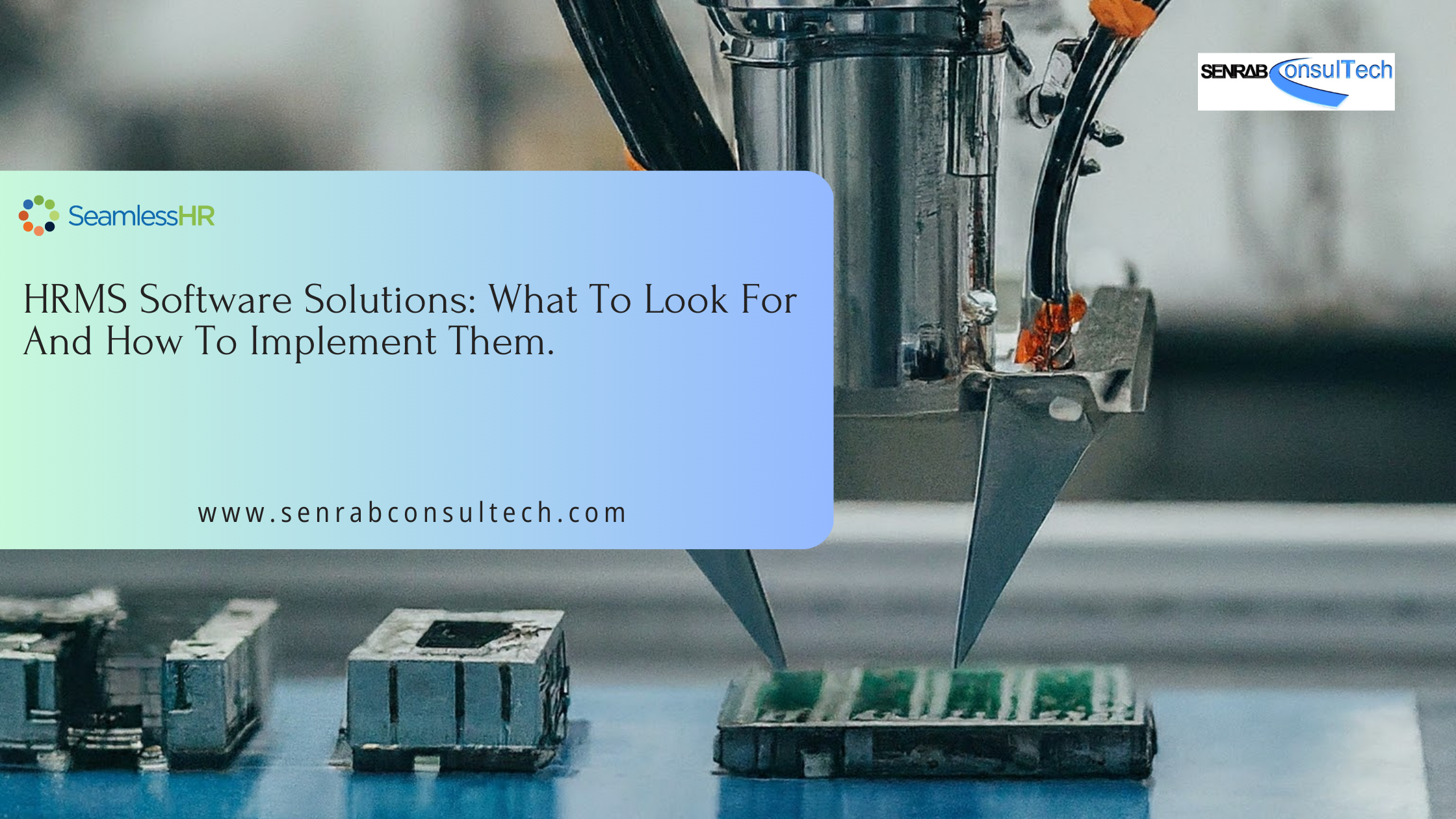The 9-box grid, a simple yet powerful tool that’s transforming how companies like yours manage talent, making sure that no potential goes unnoticed and no opportunity for growth is missed In every thriving business.
It gives a clear, strategic way to unlock the full potential of every individual on your team, ensuring that your rising stars don’t just shine today but continue to grow into tomorrow’s leaders.
One of the most effective tools in a Human Resources (HR) professional’s arsenal for managing talent is the 9-box grid. This powerful framework allows organizations to evaluate employees systematically, making it easier to make informed decisions about promotions, development, and succession planning.
In this article, we will explore why the 9-box grid is essential for effective talent management and how it can transform your organization’s approach to HR.

Understanding The 9-Box Grid
The 9-box grid is a simple yet powerful tool used to assess and categorize employees based on two critical dimensions: performance and potential. The grid is divided into nine boxes, each representing a different combination of performance (ranging from low to high) and potential (also ranging from low to high).
Employees are placed into one of these nine boxes, depending on how they score on these two dimensions. At the heart of the 9-box grid is the recognition that both performance and potential are crucial for an employee’s success and the organization’s long-term growth.
Performance refers to how well an employee is currently doing their job, while potential indicates their ability to grow and take on more significant roles in the future. By evaluating employees on these two dimensions, organizations can gain a clearer understanding of who their top performers are, who has the potential to be a future leader, and who may need additional support or development.
Key Benefits Of The 9-Box Grid In Talent Management
The 9-box grid offers several key benefits that make it an indispensable tool for effective talent management:
Enhanced Employee Evaluation
One of the primary advantages of the 9-box grid is that it provides a comprehensive and objective view of an employee’s performance and potential. Rather than relying on subjective opinions or informal assessments, the grid encourages HR professionals and managers to evaluate employees using clear, data-driven criteria.
This objectivity reduces bias and ensures that employees are assessed fairly, which can help build trust in the evaluation process. The grid also facilitates conversations between managers and employees about performance and career development. By having a visual representation of where an employee stands, managers can provide more targeted feedback and set clear goals for improvement.
Strategic Succession Planning
Succession planning is a critical component of talent management, ensuring that an organization has a pipeline of qualified candidates ready to step into key roles as they become available.
The 9-box grid plays a vital role in succession planning by identifying high-potential employees who are likely to succeed in leadership positions. By regularly updating the grid, organizations can monitor the development of these future leaders and ensure that they are ready to take on more responsibility when the time comes.
In addition to identifying future leaders, the 9-box grid also helps organizations recognize critical talent gaps. If certain boxes on the grid are consistently underpopulated, it may indicate a need for more robust recruitment, training, or development strategies in specific areas.
Focused Development Initiatives
Another significant benefit of the 9-box grid is that it allows HR teams to tailor development plans to the specific needs of each employee. For example, employees who are high performers but have low potential may benefit from development initiatives that help them maintain their performance levels while gaining new skills.
Conversely, employees with high potential but lower performance may need targeted training or coaching to help them reach their full potential. By focusing development efforts on the areas where they will have the most impact, organizations can maximize their return on investment in employee development.
This targeted approach also helps employees feel more engaged and valued, as they see that the organization is committed to helping them grow and succeed.

Improved Retention Strategies
Retention is another area where the 9-box grid can make a significant difference. High-performing employees who feel recognized and rewarded are less likely to leave the organization for other opportunities. By using the grid to identify these employees, HR teams can develop retention strategies that ensure top talent remains with the company.
In addition to recognizing top performers, the grid also helps organizations identify employees who may be at risk of leaving due to dissatisfaction or lack of development opportunities. By addressing these issues proactively, organizations can reduce turnover and retain valuable talent.
Implementing The 9-Box Grid: Best Practices
To get the most out of the 9-box grid, it’s essential to implement it effectively. Here are some best practices to consider:
Setting Clear Criteria
The success of the 9-box grid depends on having clear, well-defined criteria for evaluating performance and potential. HR teams should work closely with managers and leadership to establish these criteria, ensuring that they are aligned with the organization’s goals and values. Involving a diverse group of stakeholders in this process can help ensure that the criteria are fair and inclusive.
Regular Reviews And Updates
The 9-box grid should not be a static tool; it should be updated regularly to reflect changes in employee performance and potential. Conducting periodic reviews—such as quarterly or biannual assessments—ensures that the grid remains relevant and that development plans are adjusted as needed.
Integrating With HR Systems
Finally, integrating the 9-box grid with your organization’s HR systems can help streamline the evaluation process and make it easier to track progress over time. Senrab ConsulTech offers advanced HR software solutions that can automate the 9-box grid process, making it easier for organizations to implement and maintain this valuable tool.

Conclusion
The 9-box grid is an essential tool for effective talent management, offering a comprehensive and objective way to evaluate employees, identify future leaders, and develop targeted retention and development strategies. By implementing the 9-box grid in your organization, you can ensure that you are making the most of your talent and positioning your company for long-term success.
For organizations looking to enhance their talent management processes, Senrab ConsulTech provides cutting-edge HR solutions that can help you implement and optimize the 9-box grid, ensuring that your organization remains competitive in today’s dynamic business environment.



